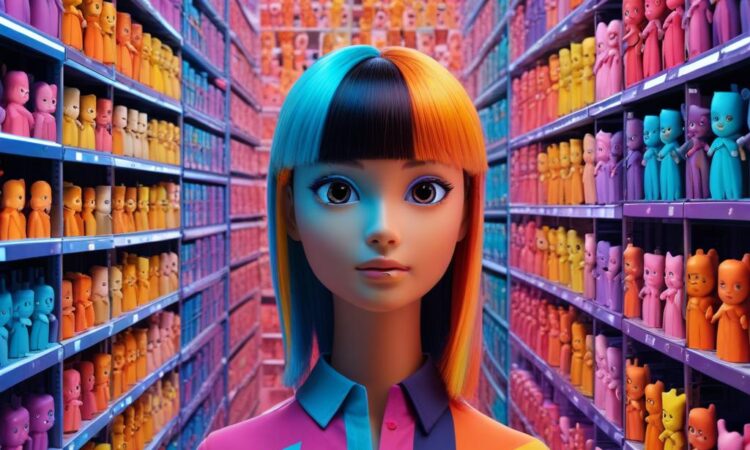Everyone’s Jumping on the AI Doll Trend – But What Are the Concerns?
Okay, so you’ve probably seen them all over your feed: AI-generated dolls, looking suspiciously like a super-realistic, hyper-stylized Barbie version of… well, everyone. People are churning out these digital doppelgängers, tweaking features, playing with outfits, and generally having a blast. It’s undeniably fun, a playful way to explore self-representation in a totally new digital space. But before you dive headfirst into creating your own perfect AI mini-me, let’s talk about the potential downsides. Because, let’s be real, there are some.
The main concern, and it’s a big one, boils down to energy consumption and data privacy. Creating these incredibly detailed AI images isn’t exactly a walk in the park for our planet’s power grid. The algorithms behind these generative AI tools are incredibly complex, requiring massive amounts of computing power. Think data centers humming away, burning through energy at a rate that’s frankly a bit alarming. We’re talking about a significant carbon footprint, one that’s often overlooked in the excitement of the trend.
And then there’s the data. To create your AI doll, you’re uploading your own personal images. That’s a fair amount of personal data, potentially including information you might not even realize you’re sharing. Think about background details in your photos – where you live, what your hobbies are, maybe even snippets of your family and friends. This data is then fed into the AI system, adding to the massive datasets used to train these models. The question then becomes: what happens to your data after your AI doll is created? Is it secure? Is it being used for purposes you didn’t consent to?
It’s not just about your photos either. These AI models learn from vast amounts of data scraped from the internet – often without proper consent or attribution. This raises significant ethical questions about copyright and intellectual property. Are the styles and aesthetics of existing artists being unintentionally (or intentionally) replicated? And what are the long-term consequences of this unchecked data collection and use?
Furthermore, there’s the issue of potential misuse. While many are using this technology for fun and self-expression, the potential for malicious use is undeniable. Imagine the possibilities for creating highly realistic deepfakes, spreading misinformation, or even engaging in identity theft. The technology, while currently used for playful avatars, has implications that reach far beyond the creation of digital dolls.
This isn’t to say we should completely dismiss the AI doll trend. The technology holds potential for creative expression and exploration. But it’s crucial to be aware of the potential drawbacks. As consumers, we need to be more informed about how these technologies operate, where our data is going, and what environmental impact our digital choices have. We need to demand greater transparency from the companies developing and deploying these AI tools.
So, should you create your own AI doll? That’s a personal decision. But before you do, take a moment to consider the bigger picture. Weigh the fun of creating a digital version of yourself against the potential downsides of energy consumption, data privacy, and ethical implications. It’s about responsible technology use – enjoying the fun while acknowledging the potential consequences.
The AI doll trend highlights a broader conversation we need to be having about the responsible development and deployment of artificial intelligence. It’s a conversation about sustainability, data privacy, and ethical considerations. It’s a conversation that needs to involve developers, policymakers, and users alike. Only through thoughtful engagement and responsible innovation can we hope to harness the power of AI while mitigating its potential risks.
Ultimately, the AI doll trend is a microcosm of a much larger issue – the need for a more conscious approach to technology. Let’s enjoy the fun, but let’s also be critical and responsible users, demanding accountability and transparency from the companies shaping our digital world.
It’s a fascinating time, isn’t it? A world where we can create digital versions of ourselves with incredible ease. But it’s also a world where we need to proceed with caution, ensuring that technological advancements benefit us all, without compromising our planet or our privacy.

